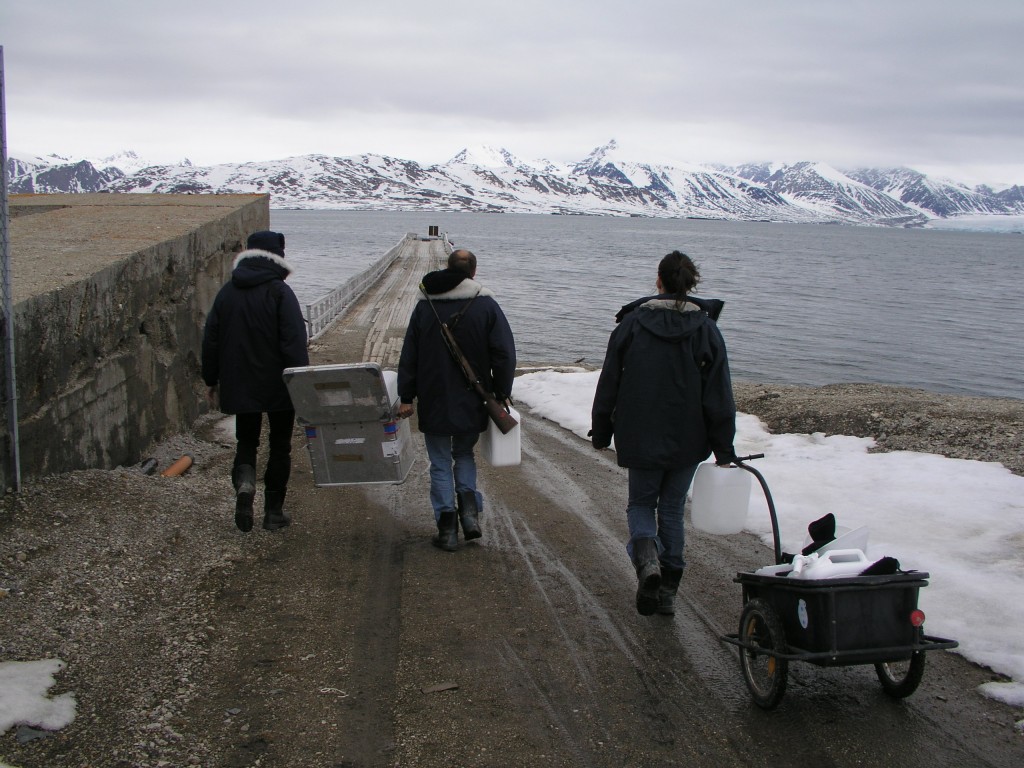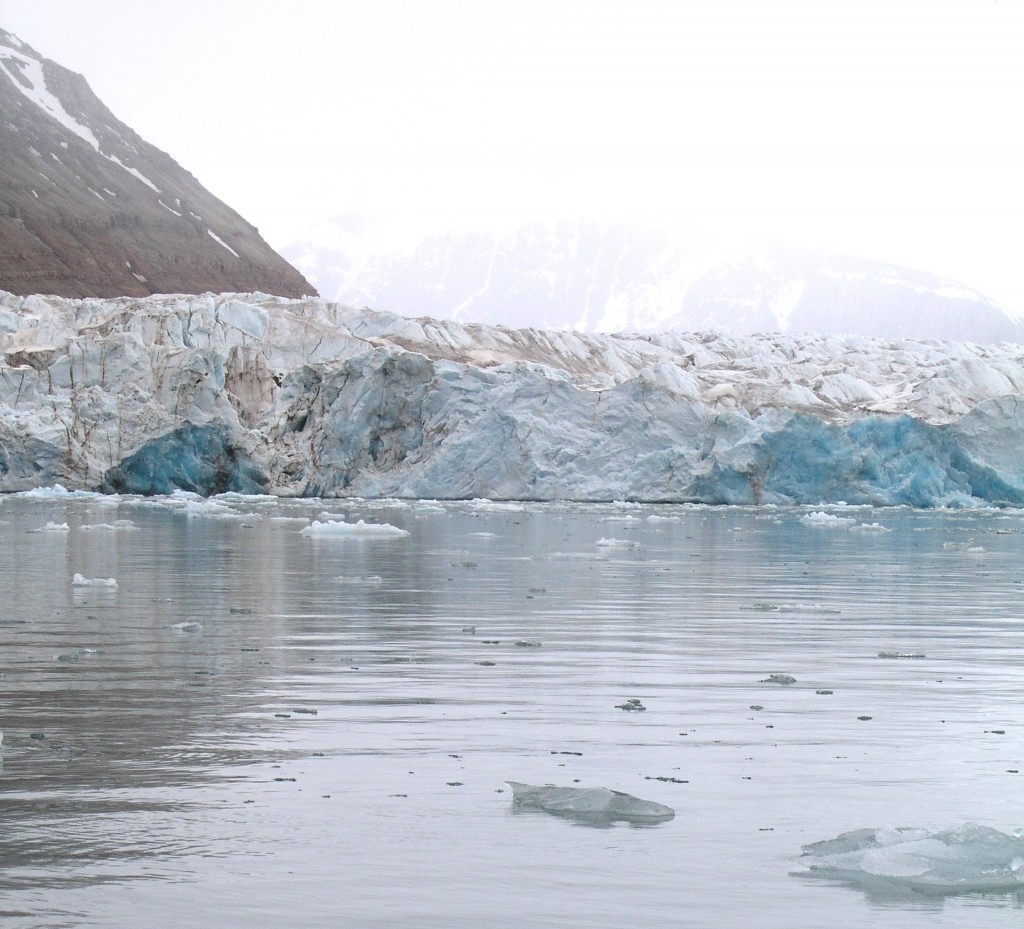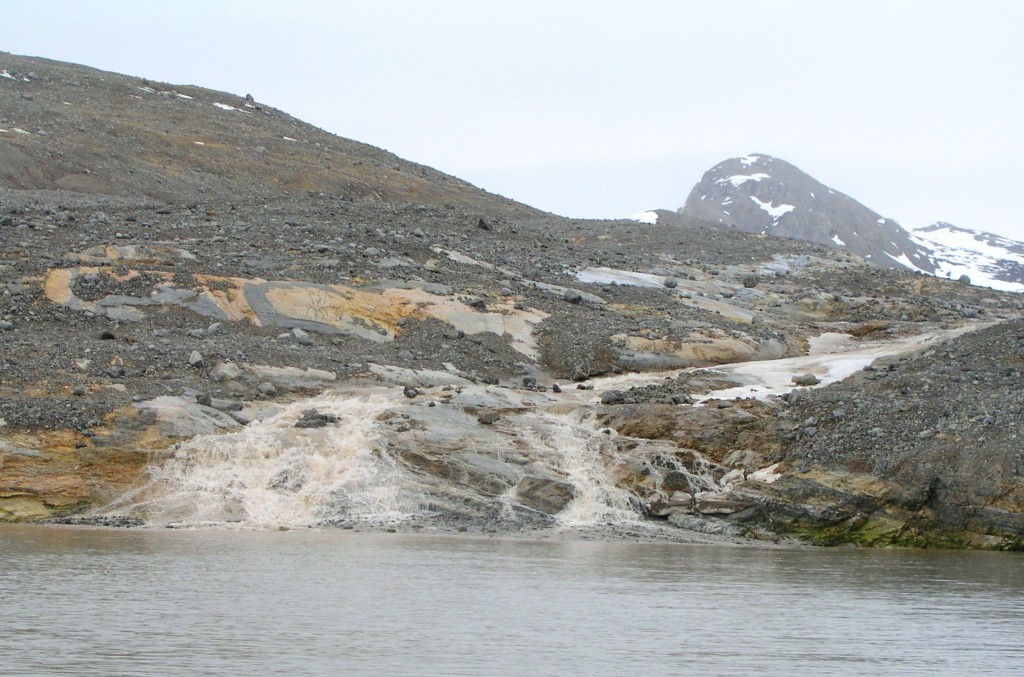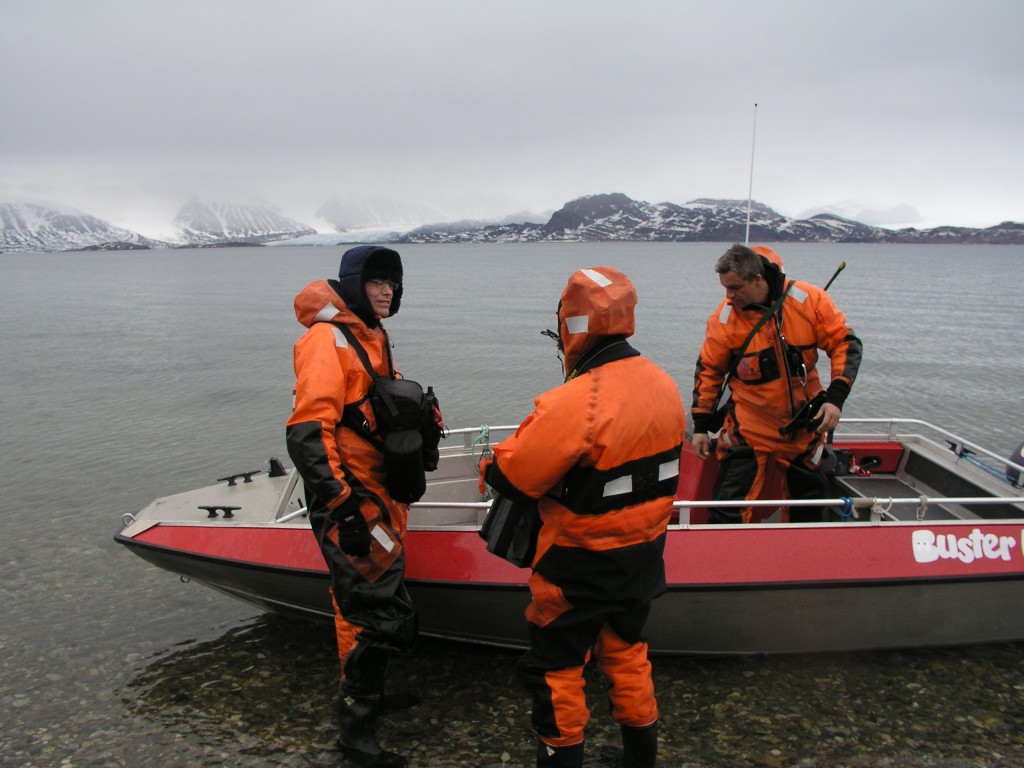Melting glacier risk to seabed ecosystem
On my first visit to the Arctic in 2007, I went out into the Kongsfjord at Ny Alesund, Spitsbergen, with some marine biologists working out of Koldewey station, run jointly by France and Germany. It was June, and the glaciers at the end of the fjord were just starting to thaw. While I was enjoying the blues, whites and greys of the sea, ice and sky, the researchers in the small boat got very excited when they saw the water turned brown, where sediment was flowing into the fjord from the retreating glacier.
“Who turned off the light up there”?
They had been waiting impatiently for the thaw to set in, because their research focus was on what that means for the life forms on the seabed, or benthos. Clearly, if you live down on the sea floor, the intrusion of brown mud and other sediment changes your surroundings. Not least, it means less light coming down from above. Now while a certain amount of that is going to happen naturally every year with the changing seasons, the question is: what happens if there is a big increase in sediment coming in because of increasing melt through climate change?
I was interested to hear about a study published this week in Science Advances, dealing with that same question in the Antarctic. The findings indicate that melting coastal glaciers are having an impact on the entire ecosystem on the seafloor, leading to a loss of biodiversity through sedimentation. The scientists were looking at the West Antarctic peninsula, where the temperature has risen almost five times faster than the global average in the last fifty years.
Global warming changes seafloor communities
The study, published by experts from Argentina, Germany and Great Britain, including the Alfred Wegener Institute, Helmholtz Centre for Polar and Marine Research (AWI,) is based on repeated research dives. The scientists believe increased levels of suspended sediment in the water caused the dwindling biodiversity registered in the coastal region. They say it occurs when the effects of global warming lead glaciers near the coast to begin melting, discharging large quantities of sediment into the seawater.
To find out exactly how and to what extent the retreat of glaciers is affecting bottom-dwelling organisms, researchers at the Dallmann Laboratory are now mapping and analysing the benthos in Potter Cove, located on King George Island off the western Antarctic Peninsula. The lab is operated by the Alfred Wegener Institute and the Argentine Antarctic Institute (IAA) as part of the Argentinian Carlini Station. Researchers have been monitoring benthic flora and fauna there for more than two decades.
In 1998, 2004 and 2010, divers photographed the species communities at three different points and at different water depths: the first, near the glacier’s edge; the second, an area less directly influenced by the glacier; and the third, in the cove’s minimally affected outer edge. They also recorded the sedimentation rates, water temperatures and other oceanographic parameters at the respective stations, so that they could correlate the biological data with these values. Their findings: some species are extremely sensitive to higher sedimentation rates.
Short sea squirts adapt better
Sea squirts are small invertebrate creatures that live on the sea floor and feed by filtering the water through their anatomies.
“Particularly tall-growing ascidians like some previously dominant sea squirt species can’t adapt to the changed conditions and die out, while their shorter relatives can readily accommodate the cloudy water and sediment cover,” says Dr Doris Abele, an AWI biologist and co-author of the study. She is worried that “the loss of important species is changing the coastal ecosystems and their highly productive food webs, and we still can’t predict the long-term consequences.”

Can Arctic marine biologists work fast enough to keep up with climate change? (Ny Alesund, Pic: I.Quaile)
As with so many aspects of our oceans, there is a lack of base data on how sediment from melting glaciers affects the numerous life forms on the seabed.
“It was essential to have a basis of initial data, which we could use for comparison with the changes. In the Southern Ocean we began this work comparatively late,” says the study’s first author, marine ecologist Ricardo Sahade from the University of Cordoba and Argentina’s National Scientific and Technical Research Council CONICET, who is leading the benthic long-term series. “Combining this series of observations, accompanying ecological research on important Antarctic species, and mathematical modelling allows us to forecast the changes to the ecosystem in future scenarios,” says co-author Fernando Momo from Argentina’s National University of General Sarmiento.
With scientists telling us the ice of the West Antarctic peninsula has already passed a tipping point, the question is whether scientific monitoring and research will be able to keep pace with the rapid rate at which climate warming is already having major impacts on our oceans. For many species of our seabottom-dwelling creatures, the slow pace of greenhouse gas emissions reductions may well come far too late.
See also: Antarctic glaciers retreat unstoppable



















Feedback